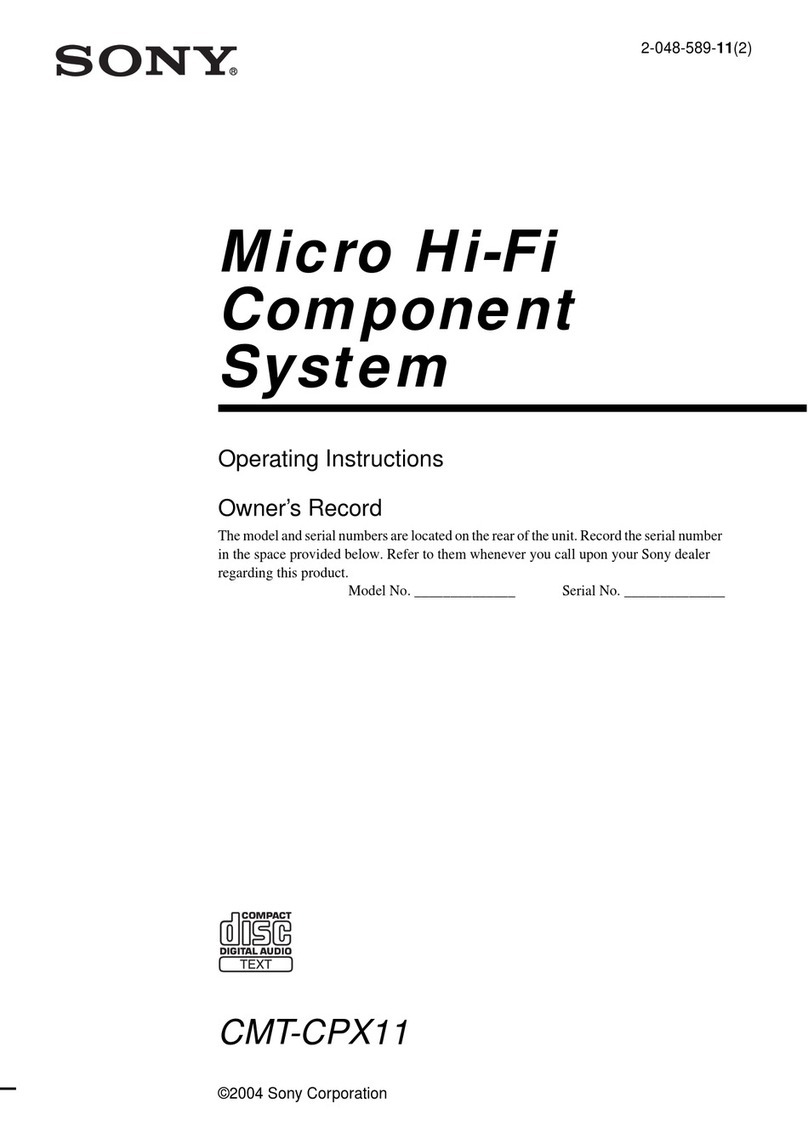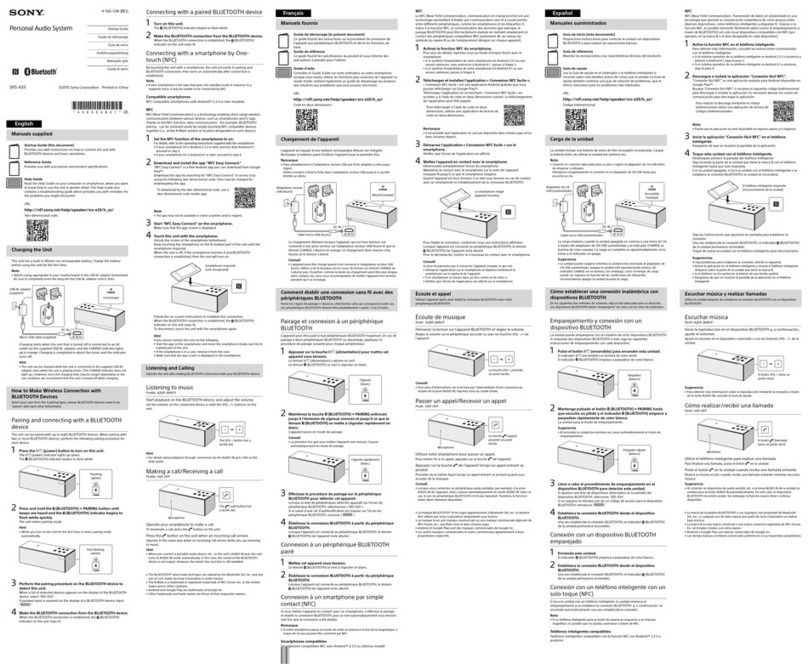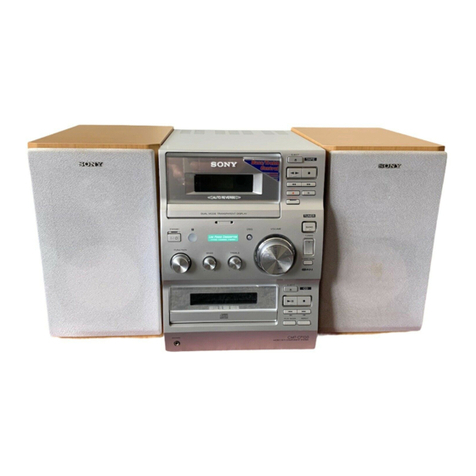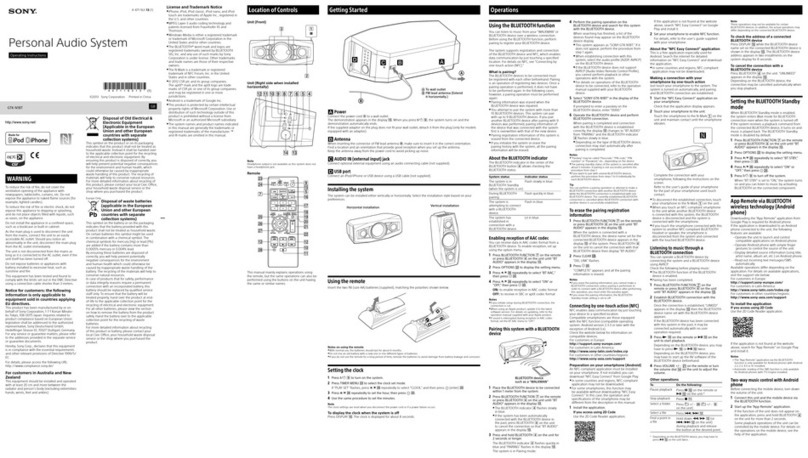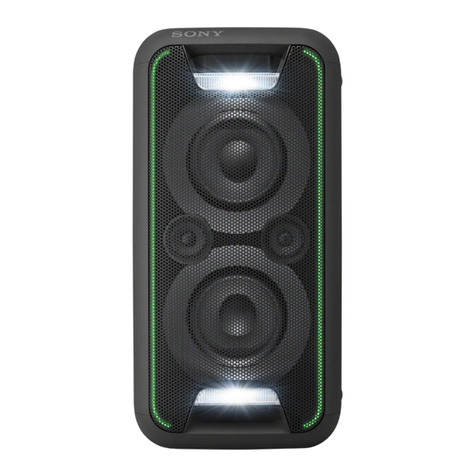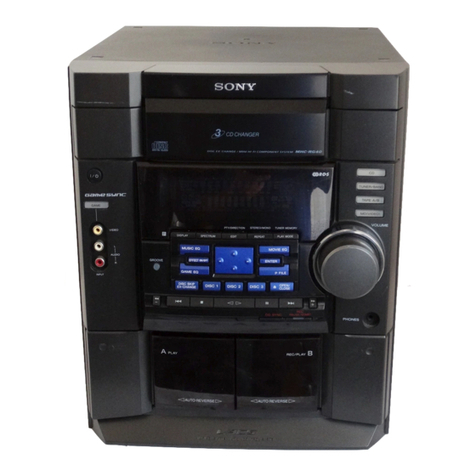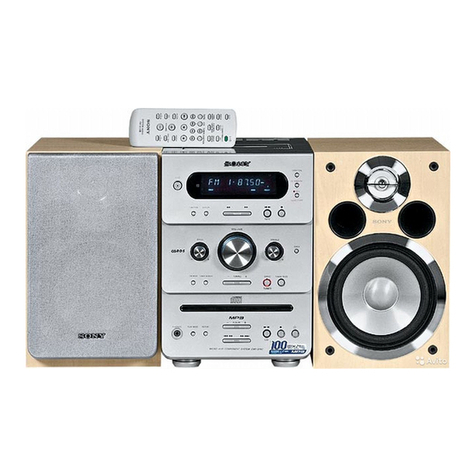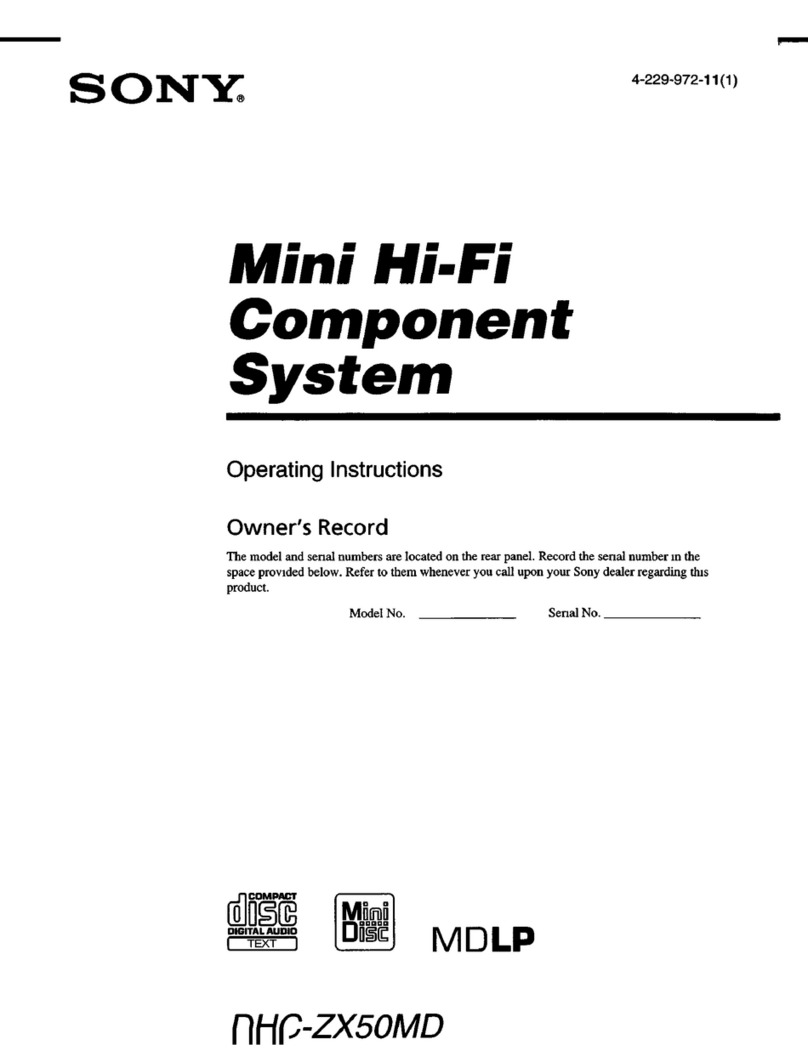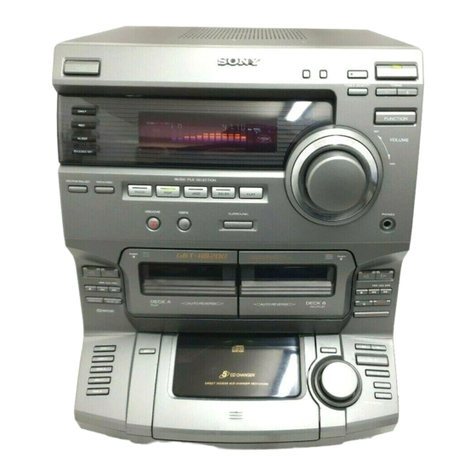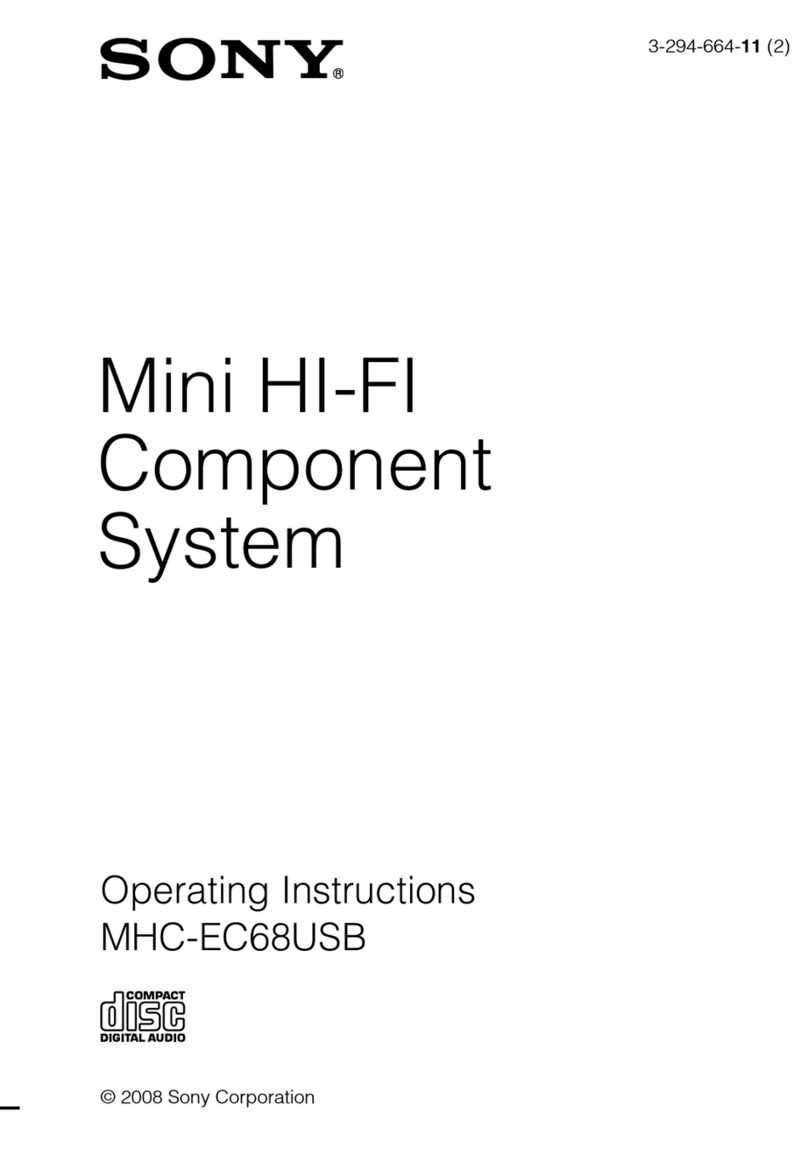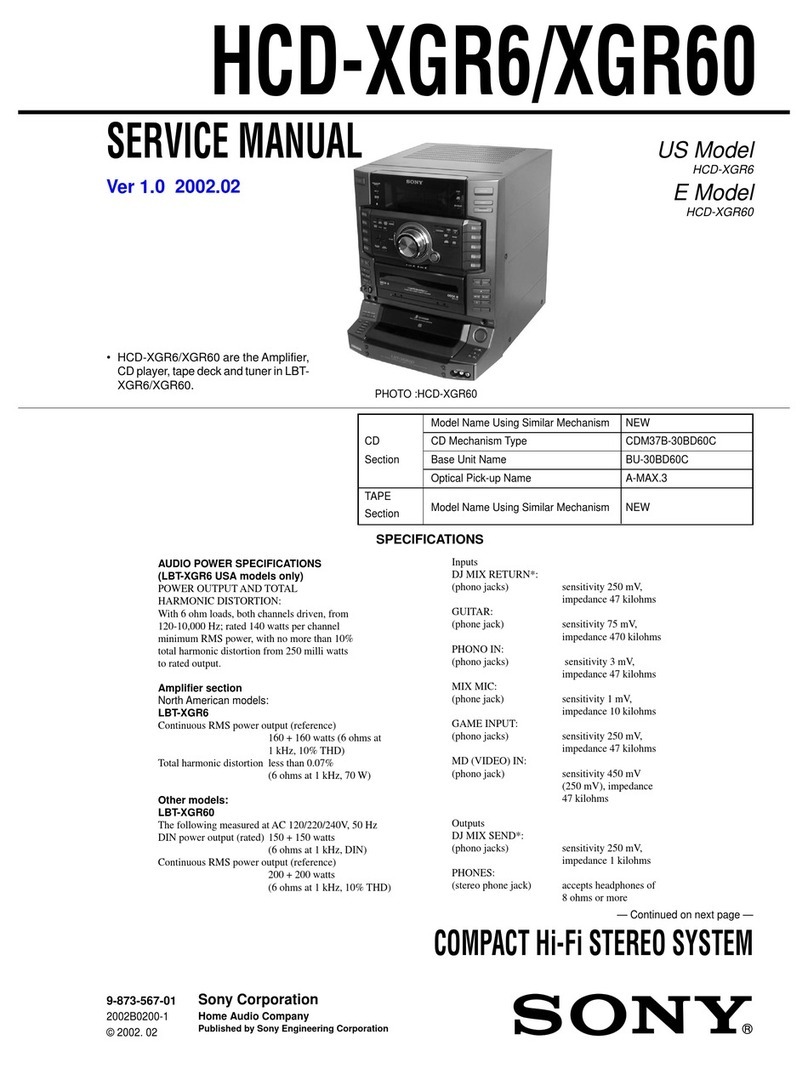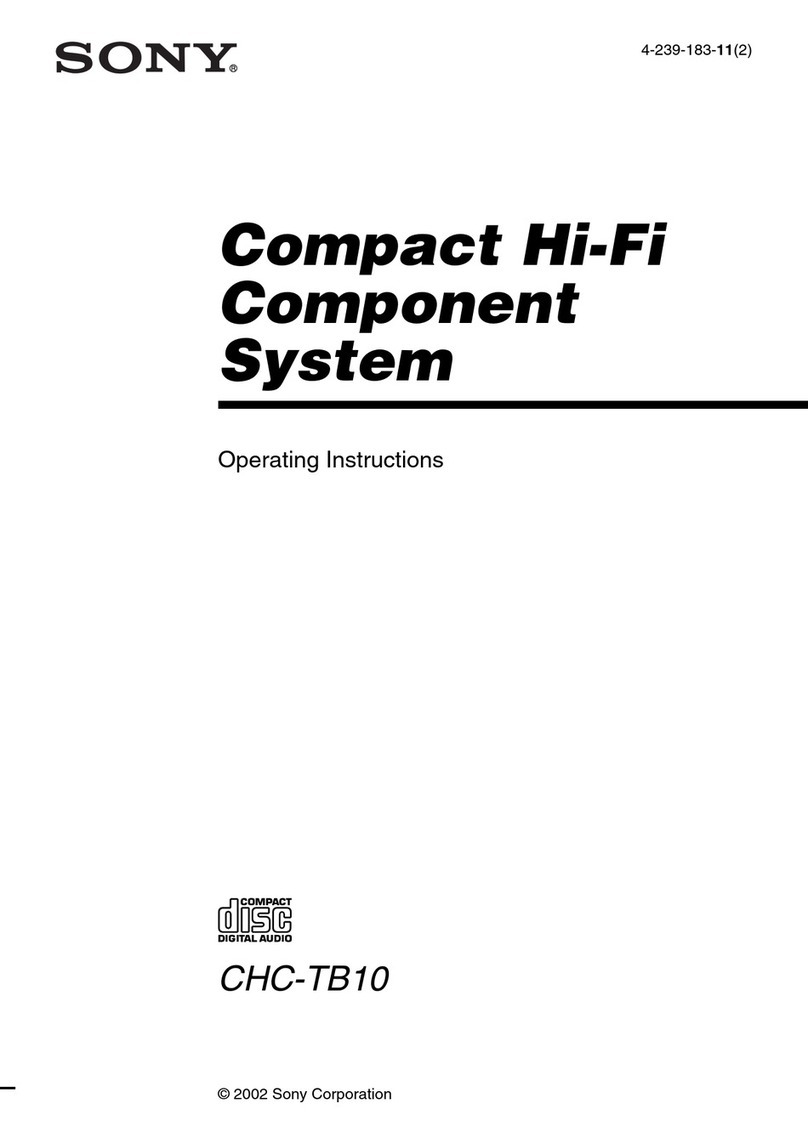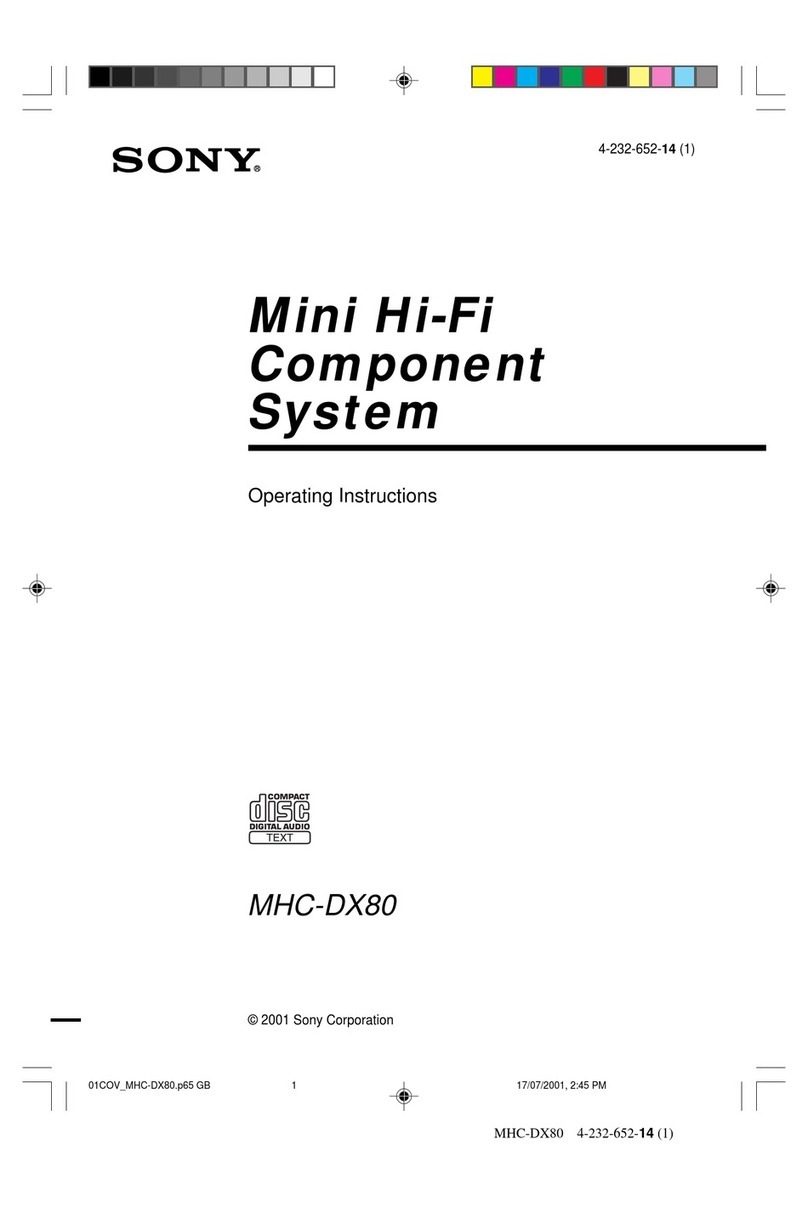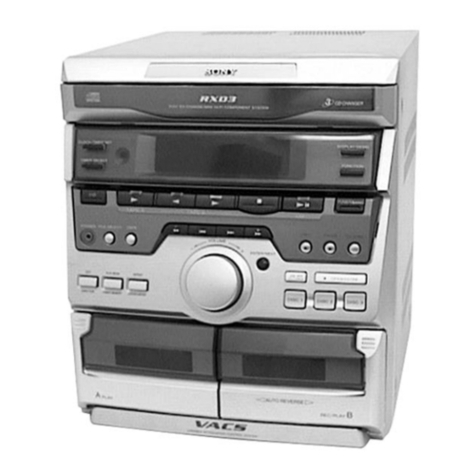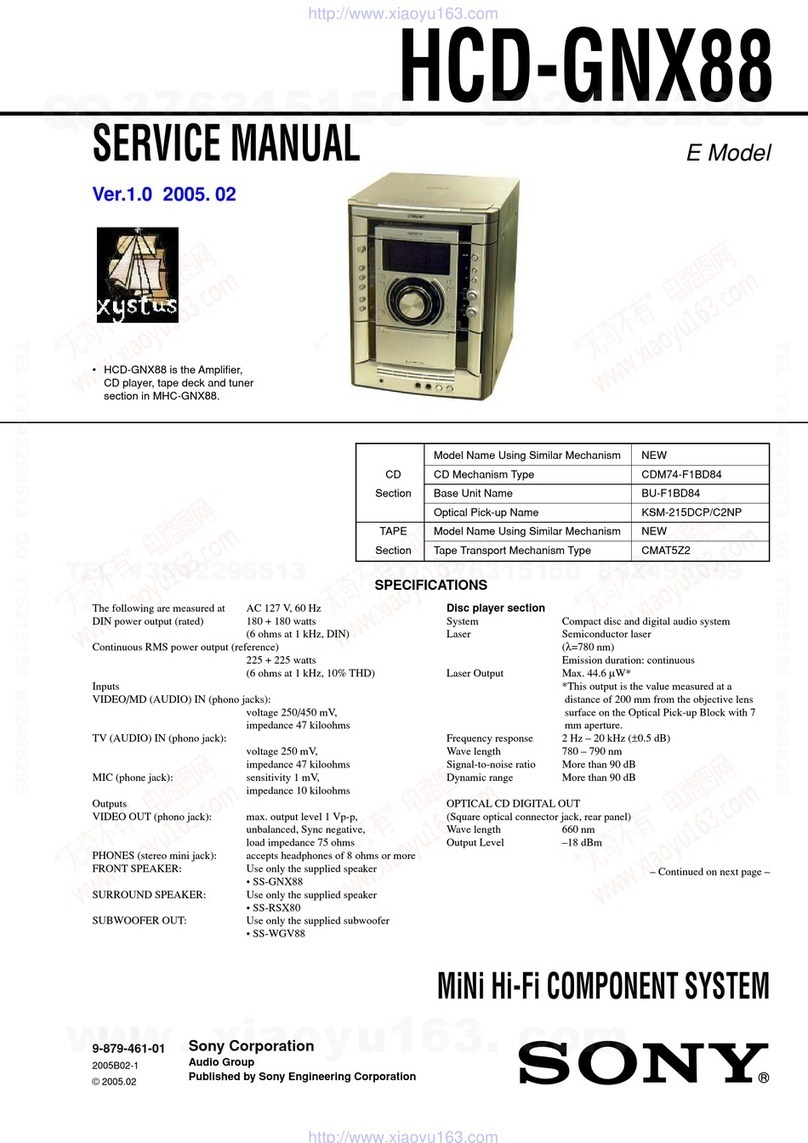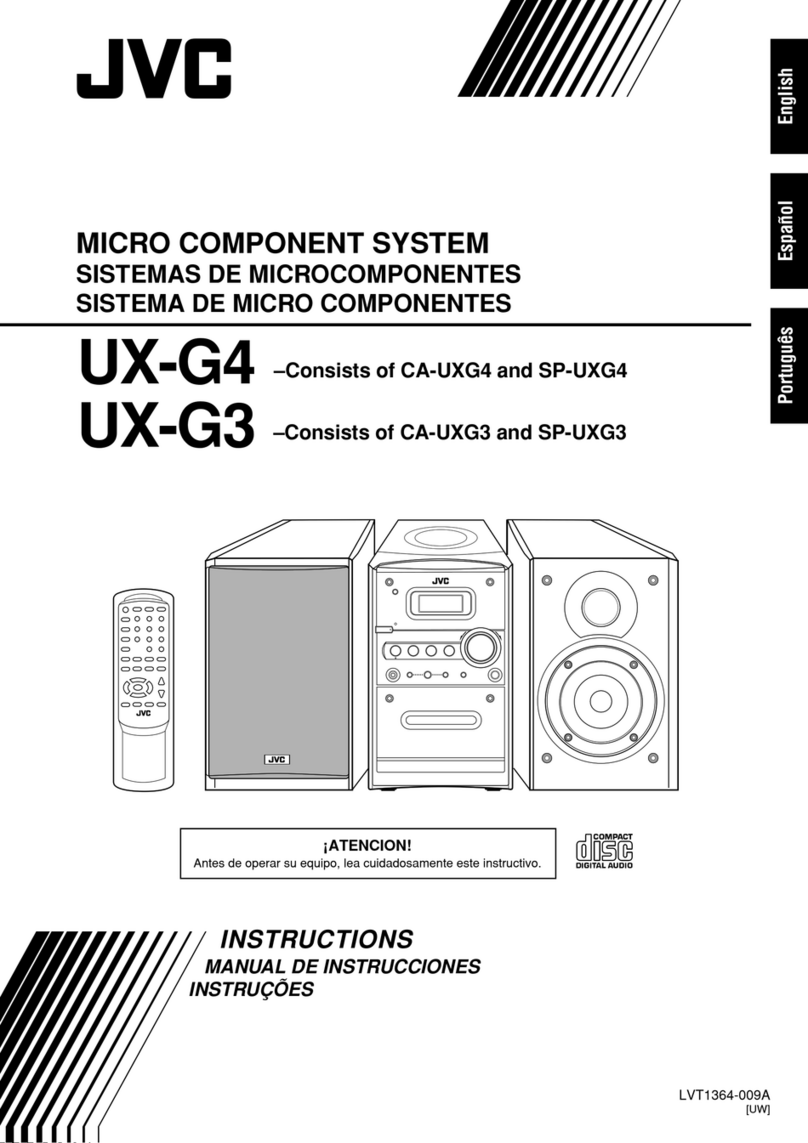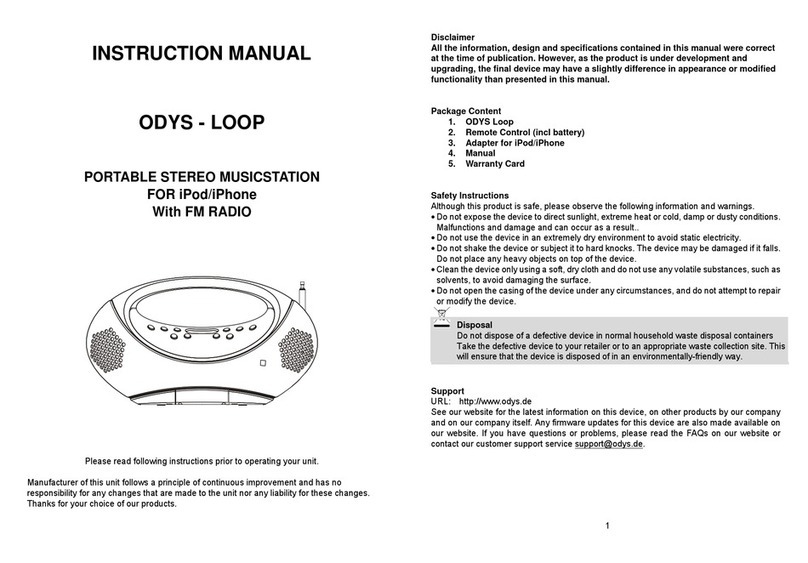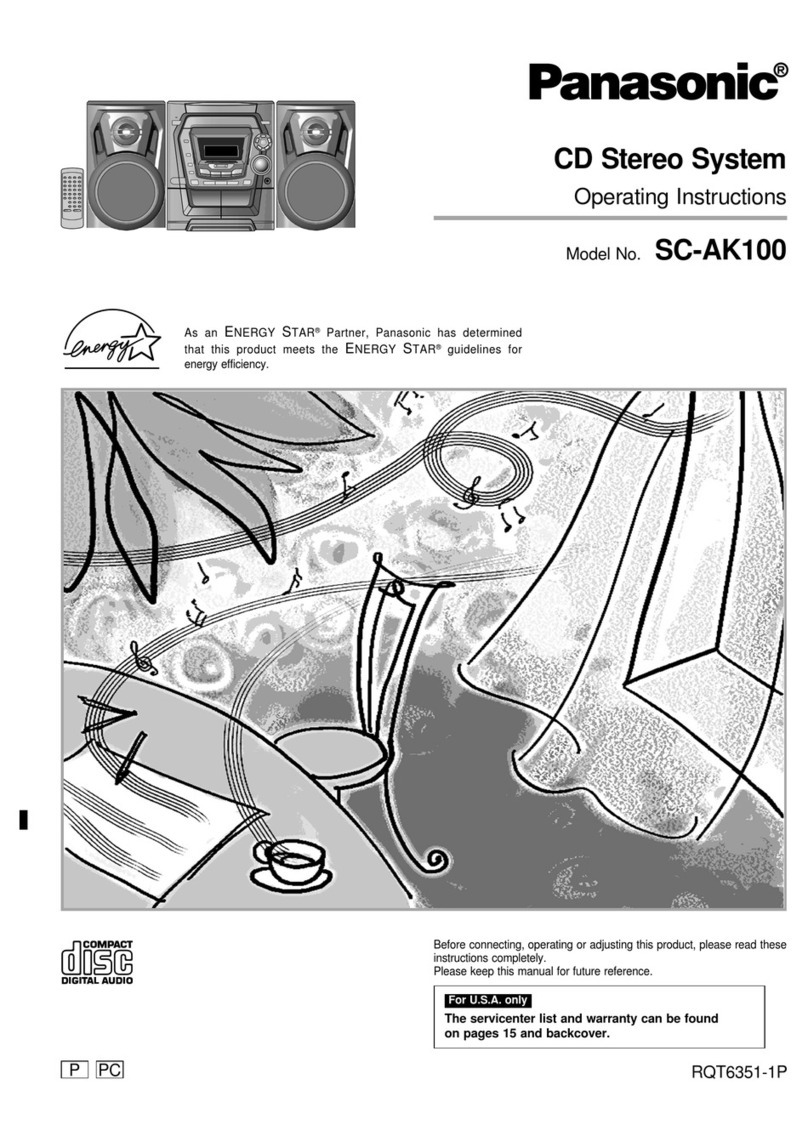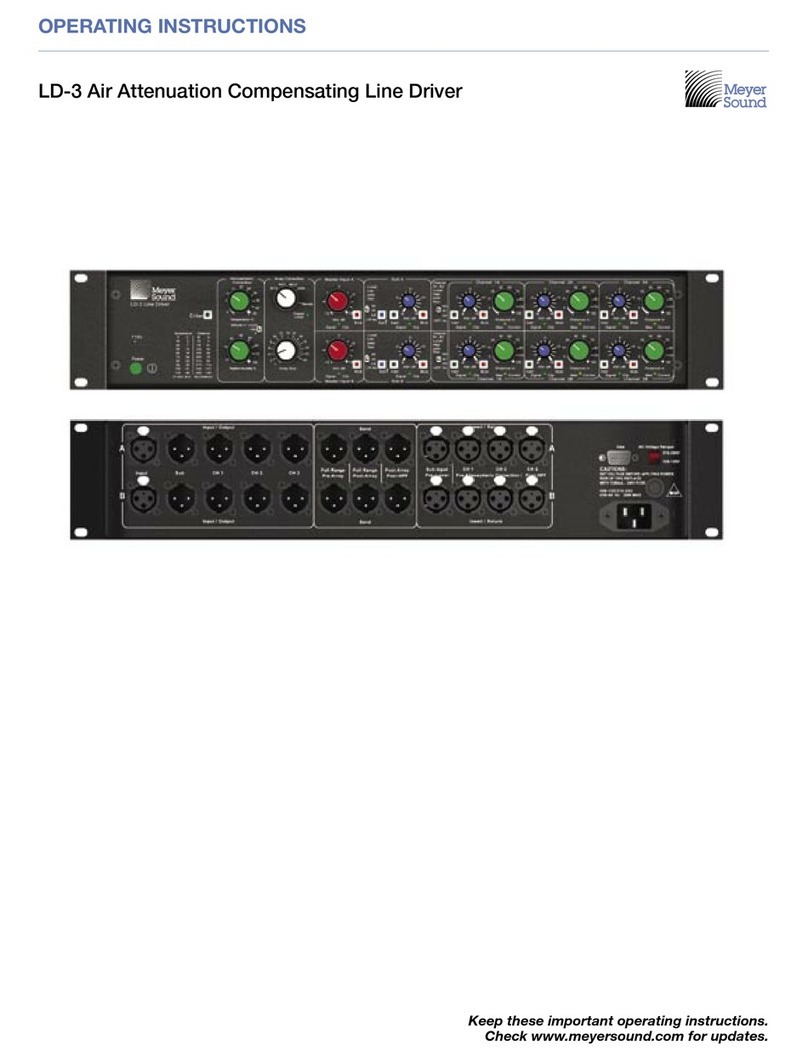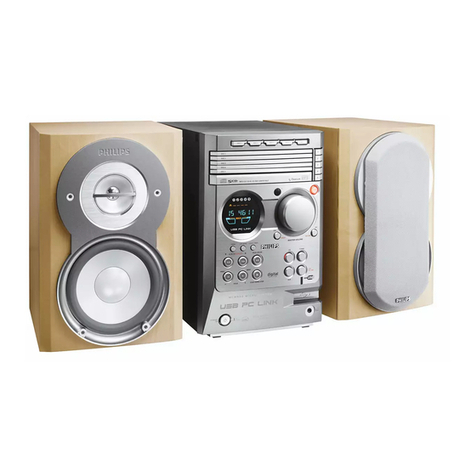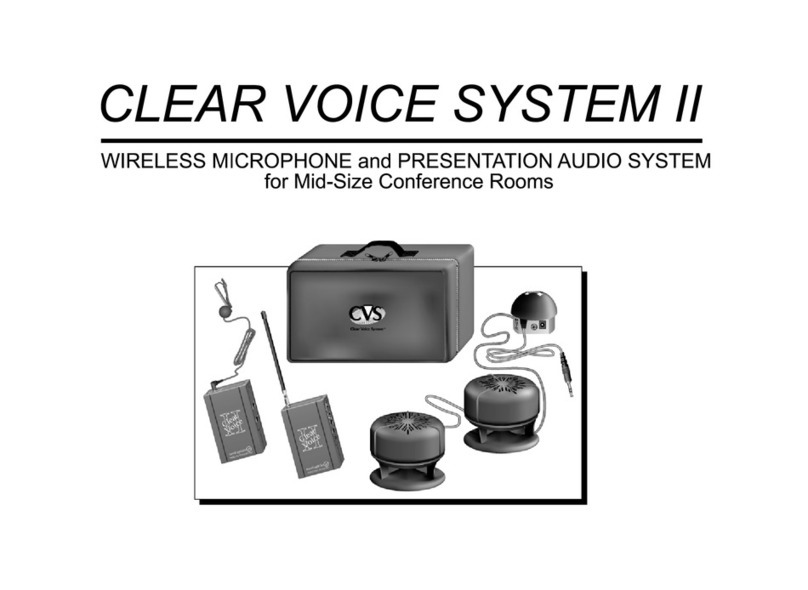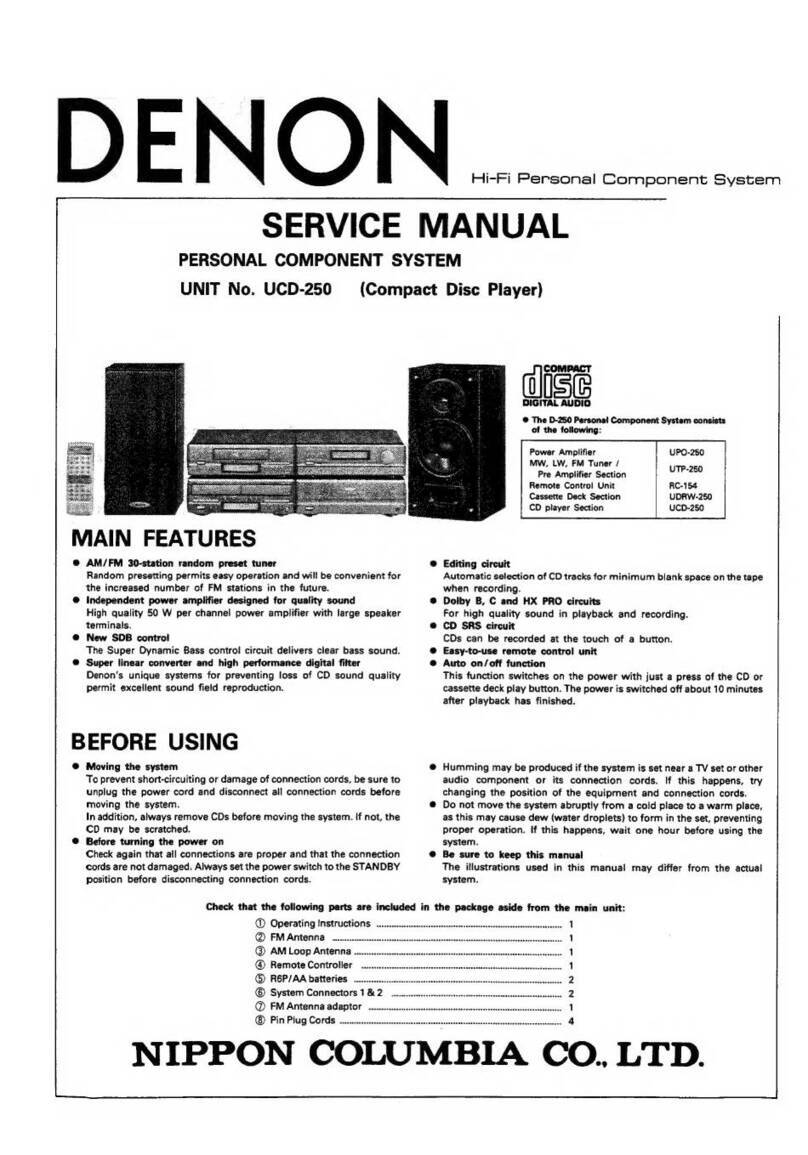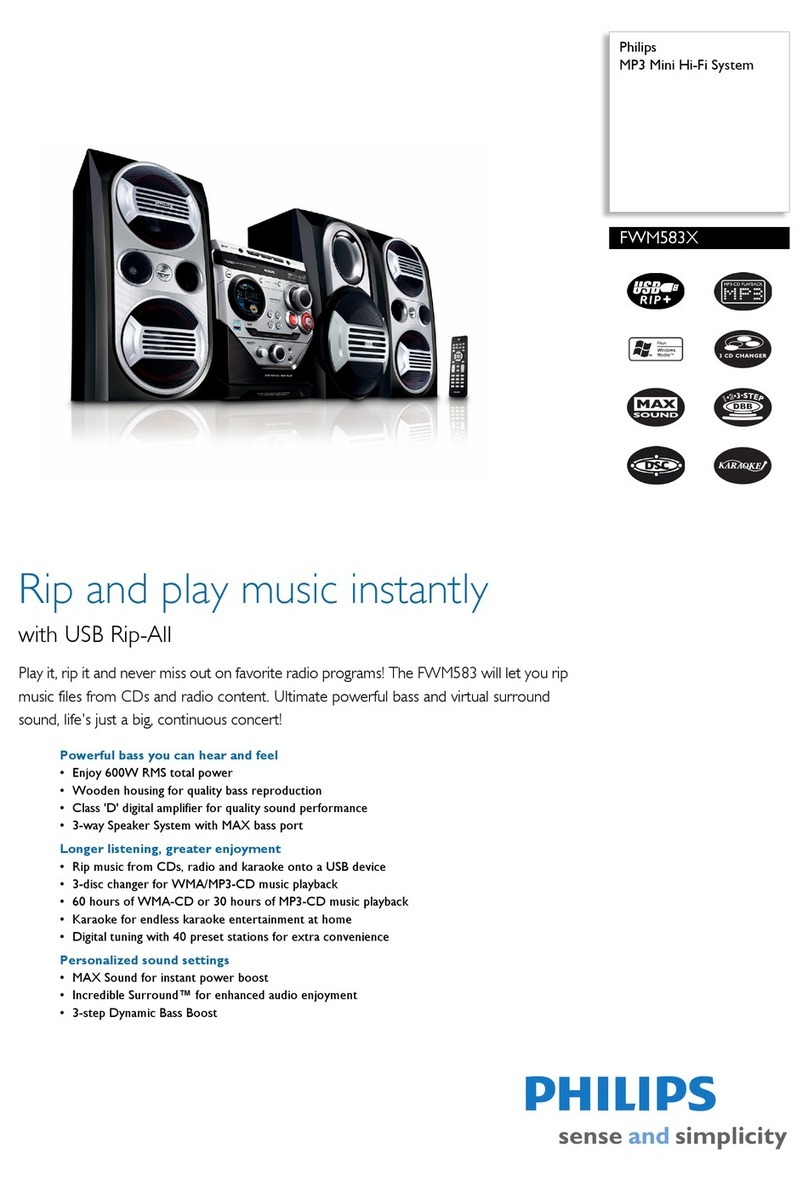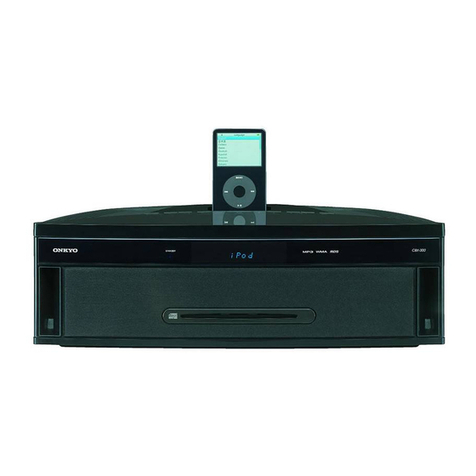3
HCD-XGV50
NOTES ON HANDLING THE OPTICAL PICK-UP
BLOCK OR BASE UNIT
The laser diode in the optical pick-up block may suffer electrostatic
break-down because of the potential difference generated by the
charged electrostatic load, etc. on clothing and the human body.
During repair, pay attention to electrostatic break-down and also
use the procedure in the printed matter which is included in the
repair parts.
The flexible board is easily damaged and should be handled with
care.
NOTES ON LASER DIODE EMISSION CHECK
The laser beam on this model is concentrated so as to be focused on
the disc reflective surface by the objective lens in the optical pick-
up block. Therefore, when checking the laser diode emission,
observe from more than 30 cm away from the objective lens.
LASER DIODE AND FOCUS SEARCH OPERATION
CHECK
Carry out the “S curve check” in “CD section adjustment” and
check that the S curve waveforms is output three times.
TABLE OF CONTENTS
1. SERVICING NOTE ·························································· 4
2. GENERAL ·········································································· 5
3. DISASSEMBLY ································································ 7
4. TEST MODE ···································································· 16
5. MECHANICAL ADJUSTMENTS ····························· 18
6. ELECTRICAL ADJUSTMENTS ······························· 18
7. DIAGRAMS
7-1. Circuit Board Location ······················································ 22
7-2. Block Diagram – CD Servo Section – ······························· 24
Block Diagram – Tuner/Tape Deck Section – ··················· 25
Block Diagram – Main Section – ······································ 26
Block Diagram
– Display/Key Control/Power Supply Section – ·········· 27
7-3. Printed Wiring Board – BD Section – ······························· 28
7-4. Schematic Diagram – BD Section – ·································· 29
7-5. Printed Wiring Board – Video Section – ··························· 30
7-6. Schematic Diagram – Video Section – ······························ 31
7-7. Printed Wiring Board – Motor LED Section – ·················· 32
7-8. Schematic Diagram –Motor LED Section – ······················ 32
7-9. Schematic Diagram – Main (1/4) Section – ······················ 33
7-10. Schematic Diagram – Main (2/4) Section – ······················ 34
7-11. Schematic Diagram – Main (3/4) Section – ······················ 35
7-12. Schematic Diagram – Main (4/4) Section – ······················ 36
7-13.Printed Wiring Board – Main Section – ····························· 37
7-14. Printed Wiring Board – CD-L, CD-R Section – ················ 38
7-15. Schematic Diagram – CD-L, CD-R Section – ··················· 39
7-16. Printed Wiring Board – TC-A, TC-B Section – ················ 40
7-17. Schematic Diagram – TC-A, TC-B Section – ··················· 41
7-18.Printed Wiring Board – Panel VR, Key Section – ············· 42
7-19. Schematic Diagram – Panel VR, Key Section –················ 43
7-20.Printed Wiring Board – Panel FL Section – ······················· 44
7-21. Schematic Diagram – Panel FL Section – ························· 45
7-22. Printed Wiring Board – Power Amp Section – ·················· 46
7-23. Schematic Diagram – Power Amp Section – ····················· 47
7-24. Printed Wiring Board – Power Supply Section – ·············· 48
7-25. Schematic Diagram – Power Supply Section – ················· 48
7-26. IC Pin Function Description ············································· 49
7-27. IC Block Diagram ····························································· 56
8. EXPLODED VIEWS
8-1. Case, Back Panel Section ·················································· 59
8-2. Front Panel Section-1 ························································ 60
8-3. Front Panel Section-2 ························································ 61
8-4. Chassis Section ·································································· 62
8-5. CD Mechanism Deck Section (CDM37B-30BD62) ········· 63
8-6. Base Unit Section (BU-30BD62) ······································ 64
9. ELECTRICAL PARTS LIST ······································· 65

